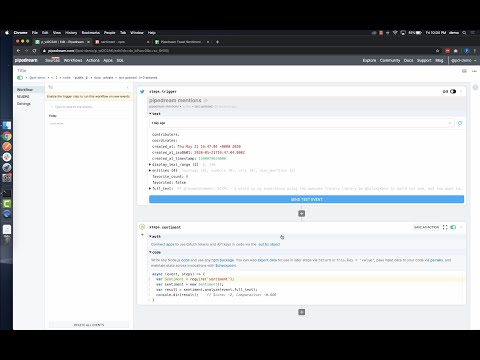What do you want to automate
with Google Sheets and ServiceNow?
Prompt, edit and deploy AI agents that connect to Google Sheets, ServiceNow and 3,000+ other apps in seconds.
Trusted by 1,000,000+ developers from startups to Fortune 500 companies
Popular Ways to Connect Google Sheets with ServiceNow#
Popular Google Sheets and ServiceNow Triggers#
Emit new event each time a comment is added to a spreadsheet.
Emit new event each time a row or rows are added to the bottom of a spreadsheet.
Emit new event each time a row or rows are added to the bottom of a spreadsheet.
Emit new event each time a row or cell is updated in a spreadsheet.
Popular Google Sheets and ServiceNow Actions#
Add a single row of data to Google Sheets. See the documentation
Add multiple rows of data to a Google Sheet. See the documentation
Creates a new incident record in ServiceNow. See the docs here
Get all values or values from a range of cells using A1 notation. See the documentation
Overview of Google Sheets#
The Google Sheets API allows for the creation, reading, updating, and deletion of data within Google Sheets, enabling a robust platform for spreadsheet management and data manipulation. Through Pipedream, you can craft serverless workflows that respond to various triggers, such as webhook events, emails, or scheduled times, to interact with Google Sheets. This synergy can automate reporting, synchronize data across applications, manage inventory, track leads in a CRM, or even conduct survey analysis by updating and retrieving sheet data on the fly.
Connect Google Sheets#
import { axios } from "@pipedream/platform"
export default defineComponent({
props: {
google_sheets: {
type: "app",
app: "google_sheets",
}
},
async run({steps, $}) {
return await axios($, {
url: `https://www.googleapis.com/oauth2/v1/userinfo`,
headers: {
Authorization: `Bearer ${this.google_sheets.$auth.oauth_access_token}`,
},
})
},
})
Overview of ServiceNow#
The ServiceNow API lets developers access and manipulate records, manage workflows, and integrate with other services on its IT service management platform. These capabilities support automating tasks, syncing data across platforms, and boosting operational efficiencies.
Connect ServiceNow#
import { axios } from "@pipedream/platform"
export default defineComponent({
props: {
servicenow: {
type: "app",
app: "servicenow",
}
},
async run({steps, $}) {
return await axios($, {
url: `https://${this.servicenow.$auth.instance_name}.service-now.com/api/now/table/incident`,
headers: {
Authorization: `Bearer ${this.servicenow.$auth.oauth_access_token}`,
},
})
},
})
Related Videos#



Community Posts#


